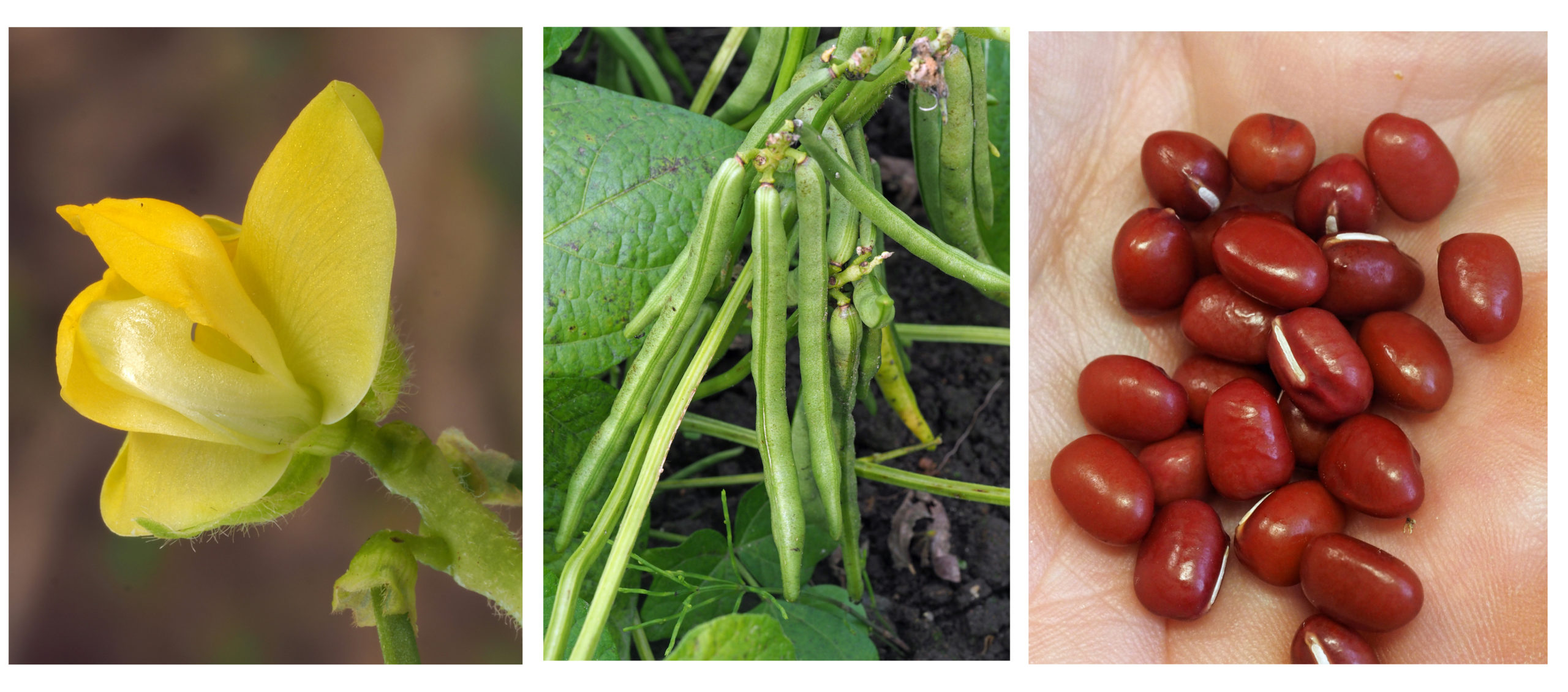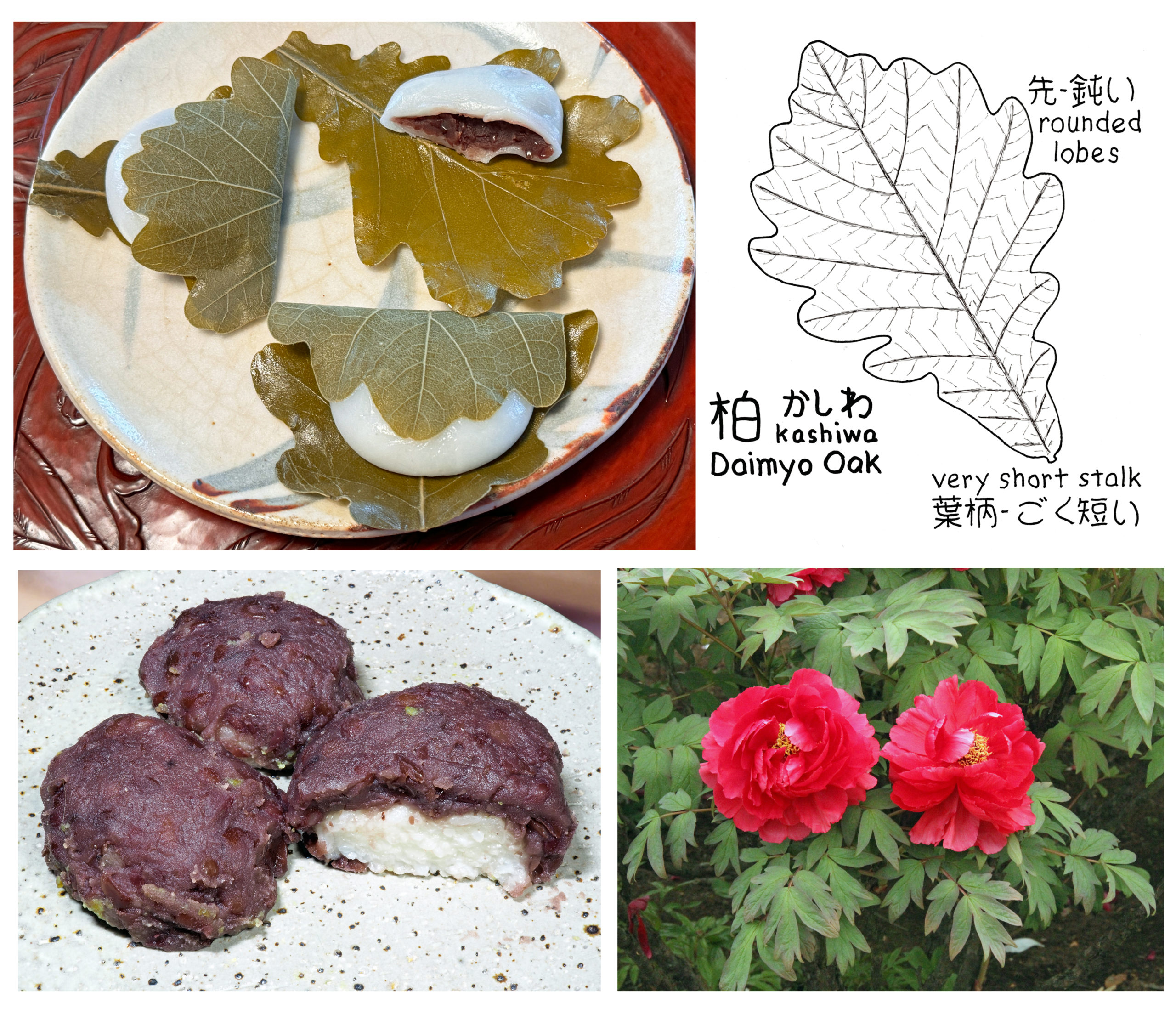During the past several decades I have written uncountable newspaper and magazine essays about Japanese nature and culture, in both Japanese and English. One golden rule relentlessly drummed into my head by editors is the need to spotlight food culture when writing for a Japanese audience. This has always posed a challenge for me. Growing up in an Irish-American family where we flavored everything, including potatoes, spaghetti, and rice, with butter and salt, I find myself, to put it mildly, lacking in gastronomical finesse.
There are, however, one or two facets of washoku Japanese food culture in which I consider myself a wee bit of a connoisseur. One of these is wagashi or Japanese sweets, especially those based on anko, a sweetened bean paste made from boiled azuki red beans. Azuki (Vigna angularis), usually spelled adzuki in English, originates from a wild species that is widely distributed throughout East Asia. Botanists are not quite sure where or when the first domesticated varieties were grown.

Anko bean paste is sandwiched between two small pancakes in dora-yaki, a favorite of both me and the beloved manga/anime robot cat Doraemon. Another delicious wagashi delight packs the anko paste inside or on top of sticky mochigome rice. The sakura-mochi we enjoyed during cherry blossom season featured anko packed inside soft-pounded mochigome, then covered by a salt-pickled cherry tree leaf.
Japanese love to follow the seasons with their taste buds, enjoying a steady progression of delicacies tied to specific times of the year. Sakura-mochi, for example, completely vanished from store shelves as soon as the cherry blossom season was over, but was soon replaced by the kashiwa-mochi. This is a very similar sweet except that the leaf used to wrap the mochigome comes from the kashiwa or Daimyo Oak.
The kashiwa (Quercus dentata)is a deciduous oak that thrives throughout the Japan isles and on the adjacent mainland. In the southern Kanto lowlands these oaks are rarely encountered in the wild, but are popular park and garden trees. The leaves are 15 to 20 cm long, with very short stalks. The hard wood is used for furniture and barrel-making, while traditional dyes are obtained from the leaves and bark. Kashiwa-mochi are typically relished in late spring to early summer, and are arranged on dishes as special offerings during the May 5th Boys’ Day celebrations.
Another anko sweet popular during spring is bota-mochi. The anko is spread on top of the rice cake rather than buried inside. Bota-mochi usually first appear just before the spring equinox, and are placed on graves and home Buddhist altars as offerings to the ancestral spirits. They are also popular in late April and early May, when the botan peony flowers, which give them their name, are in full bloom. The exact same style of sweet is also offered to the ancestors around the autumn equinox; but the name is changed to hagi-mochi, in honor of the hagi bush clovers that bloom at this time of year.

Perhaps the most popular spring anko sweet is the kusa-mochi, featuring sweet bean paste nestled inside a cake of mochigome that has been mixed with boiled young leaves of yomogi or Japanese mugwort. The mugwort leaves give the mochi an eye-catching deep green color. Kusa-mochi are available in supermarkets and convenience stores year-round, but the traditional time to enjoy them is spring, when the young leaves are at their freshest.
Yomogi (Artemisia indica) is a resilient perennial herb in the Sunflower Family. The plants proliferate through their wide-spreading network of underground roots, and can easily take over open fields, suburban streets, and even inner-city alleys. Dried yomogi leaves are prescribed in traditional Asian medicine to treat mild stomach disorders. The undersides of the leaves are covered with dense white hairs that are scraped off and dried and burned on or above the skin in moxibustion, a traditional Asian therapy usually employed in conjunction with acupuncture.
Despite these myriad benefits, mugwort has a nasty down side as well. By mid-autumn the cute little spring herbs have shapeshifted into dense shrubs packed to the gills with hundreds of tiny wind-pollinated flowers. The pollen released by these flowers can trigger severe allergies in sensitive individuals. Most people don’t even recognize the mugwort bushes at this stage, and may be walking or even standing by clusters of them on their daily routines.
Yomogi thrives in the Hokuso satoyama countryside. Until recently, almost all farmwomen made batches of kusa-mochi to take out as lunchtime snacks when working in the spring paddies. I cherish many fond memories of being graciously treated to homemade kusa-mochi while out on my countryside hikes and bikes. Sadly, collecting mugwort leaves now proves a bit too arduous for many of these seasoned farmwomen, and the younger generation seems less inclined to carry on the tradition.
If there are truly magickal beans in this world, azuki would certainly be a top candidate!

